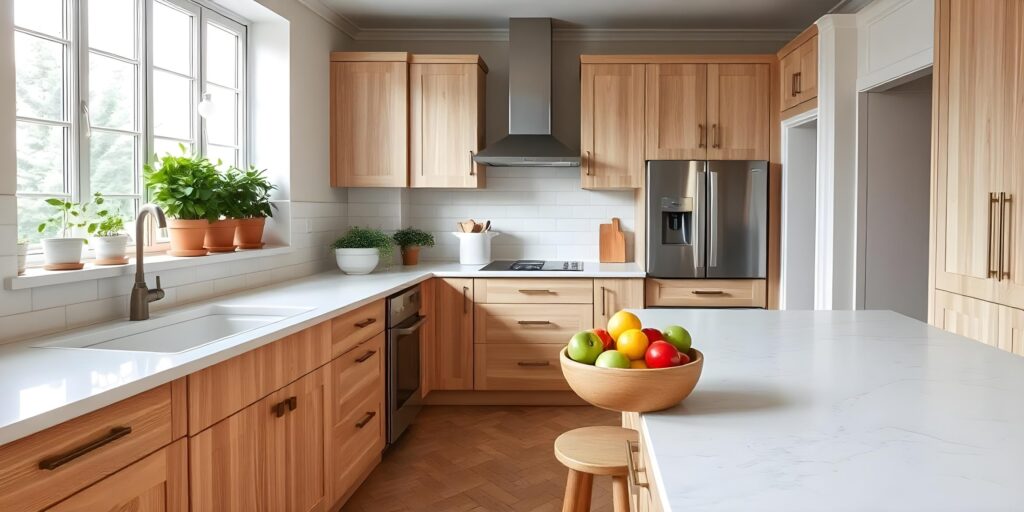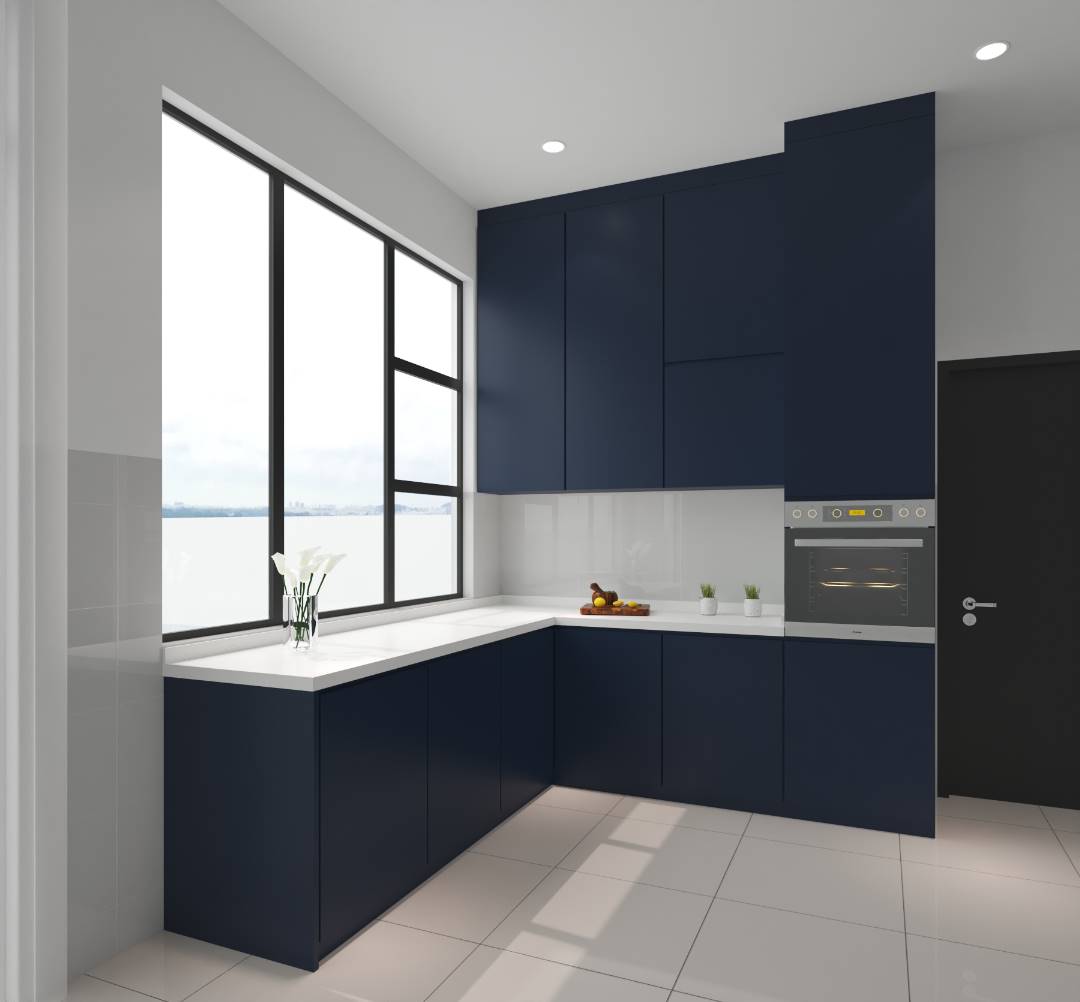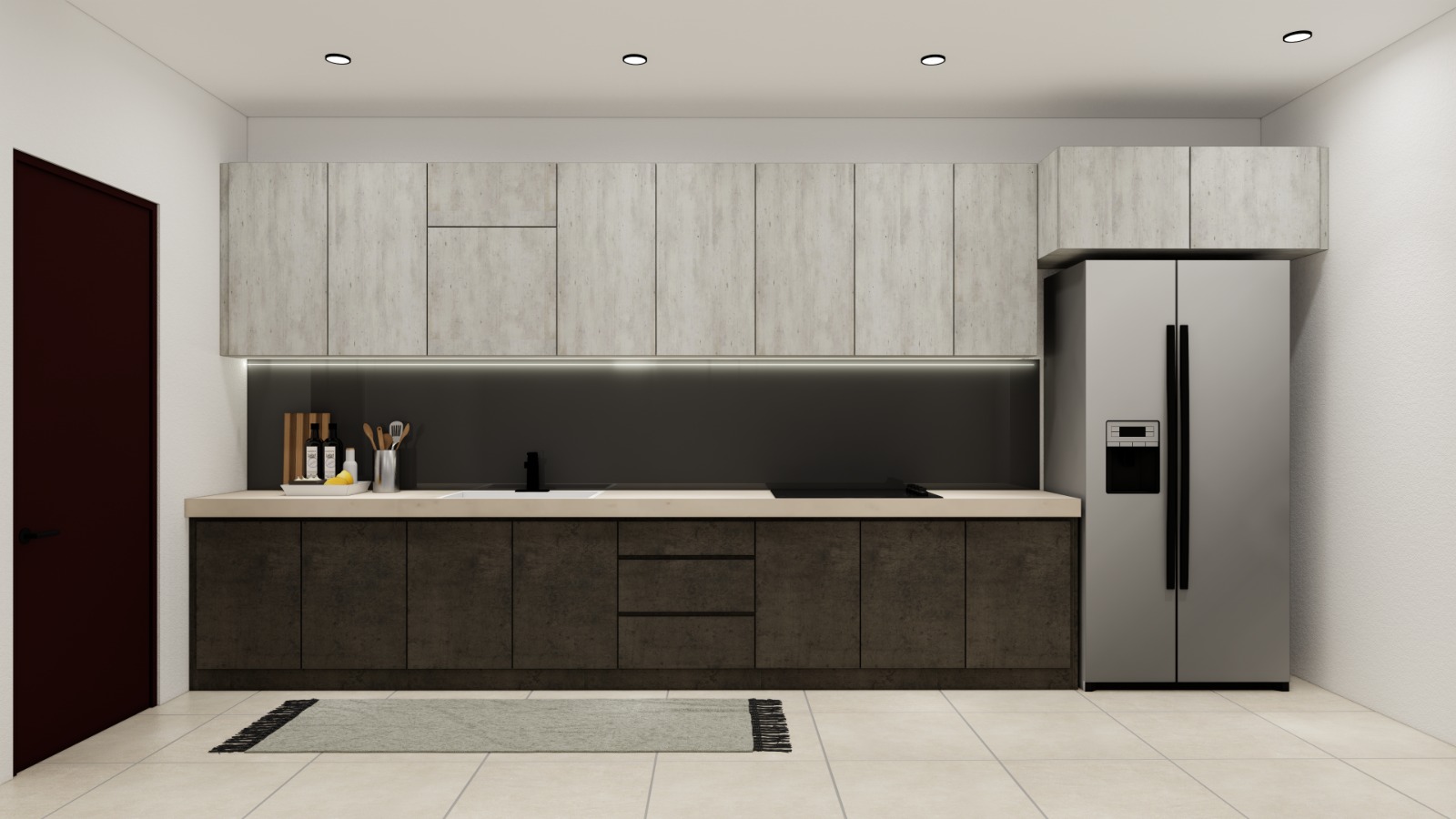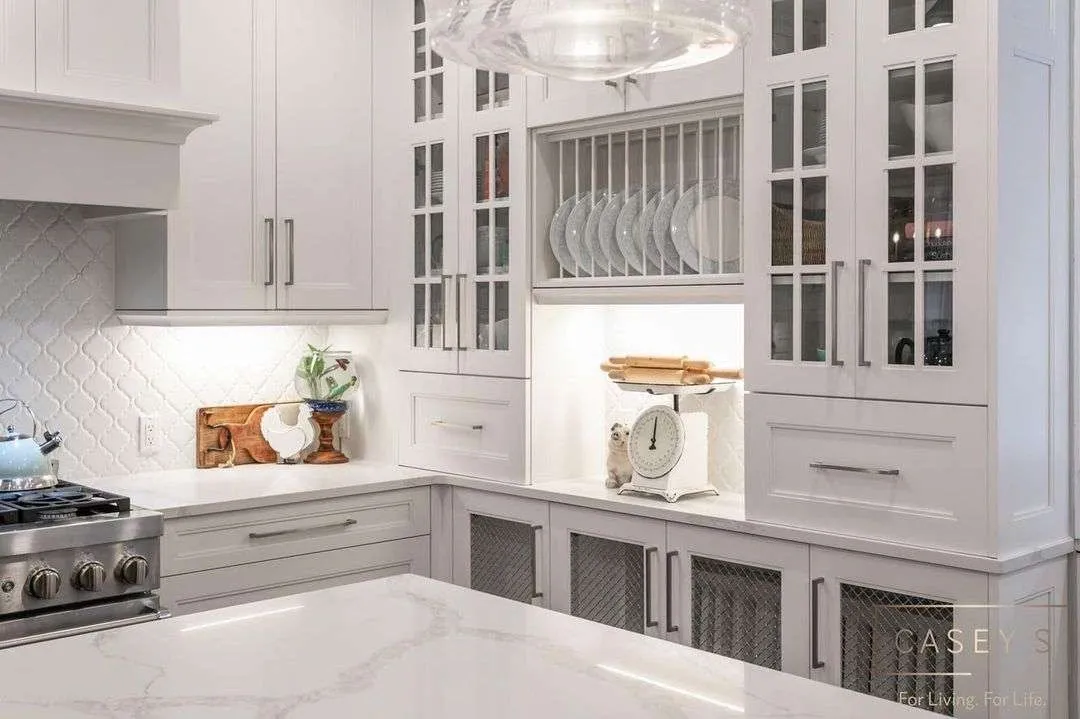Framed vs frameless cabinets are some of the two examples you can decide as choosing cabinets sets the tone for your entire kitchen. Let's explore how they differ in appearance.
Framed vs Frameless Cabinets 1: The Appearance You Love
Frameless: Modern Minimalism
- Sleek and Streamlined: Frameless cabinets boast clean lines and a modern aesthetic. Doors attach directly to the cabinet box, creating a seamless look with no visible frame when closed.
- European Inspiration: This style originated in Europe and is ideal for achieving a contemporary or minimalist design.
- Unobstructed View: Opening frameless cabinets reveals a full and uninterrupted view of the interior.
Framed: Classic Charm with Customization
- Traditional Appeal: Framed cabinets offer a timeless look with a visible frame surrounding the doors.
- Design Versatility: Framed cabinets are incredibly versatile. Choose from full overlay, semi-overlay, or inset door styles, each creating a distinct reveal when closed.
- Decorative Options: Framed cabinets provide a canvas for decorative elements like raised panels, adding a touch of elegance.
Appearance in Action:
- Modern Match: Frameless cabinets pair beautifully with modern door styles like Shaker or slab, creating a cohesive and streamlined aesthetic.
- Traditional Flair: Framed cabinets offer more flexibility to suit a wider range of design styles, from traditional to contemporary. When closed, they showcase a framed ledge and center stile, adding a touch of classic charm.
The Choice is Yours:
Ultimately, the best cabinet style for your kitchen depends on your desired look. Do you crave a sleek, minimalist vibe or a traditional design with character?
Expert Guidance:
At Ampquartz, we understand the importance of choosing the perfect cabinets for your vision. Our team of specialists can help you navigate the options and make informed decisions to achieve your dream kitchen.
Framed vs Frameless Cabinets 2: Maximum Space
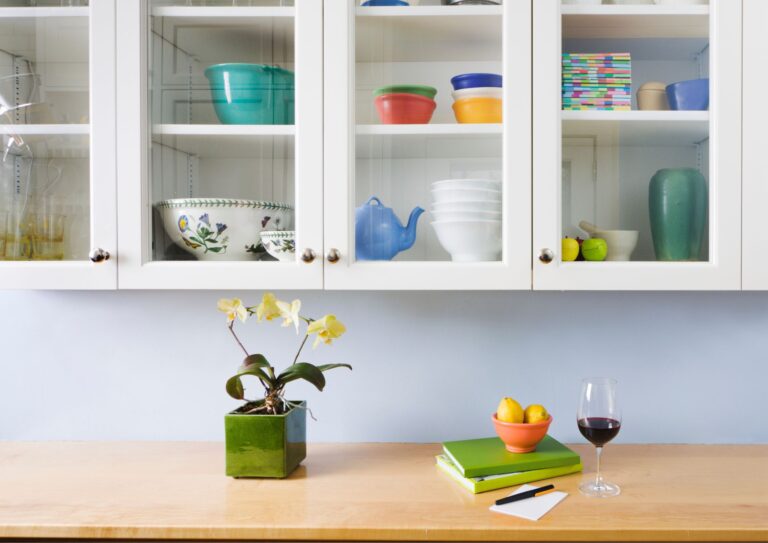
Frameless: Uncompromised Accessibility
The key difference lies in the lack of a front frame in frameless cabinets. This creates several advantages:
- Wider Openings: Without a center stile separating the doors, frameless cabinets provide full-width access to the interior. This makes it easier to reach for and retrieve items, especially larger pots, pans, and appliances.
- Unobstructed View: You can see everything at a glance, eliminating the need to rummage around for forgotten items.
Framed: Classic Design, Smart Storage Solutions
Framed cabinets offer a traditional aesthetic with a visible frame surrounding the doors. While the frame might create slightly narrower openings:
- Smart Design Elements: Framed cabinets can still be highly functional. Adjustable shelves, pull-out trays, and specialized organizers maximize storage capacity and help you utilize every inch of space effectively.
@ampquartzcabinets Do you a fan of Aluminum Kitchen? Aluminum kitchen cabinet is the most suitable for a wet kitchen! Buy 1, Free 11 within this November‼️ Interested? Get quote now! Link on Bio 🤗 #AMPQUARTZ #kitchencabinet #customcabinetjohor #wetkitchen
♬ original sound – Matthew Ifield
The Choice is Yours:
Ultimately, the best cabinet style for space efficiency depends on your needs and priorities. Do you value maximum accessibility for frequently used items, or prioritize classic design with clever storage solutions?
We Can Help!
At Ampquartz, we understand the importance of maximizing space in your kitchen. Our team of specialists can help you choose the right cabinet style and optimize your layout for a kitchen that's both beautiful and functional.
Framed vs Frameless Cabinets 3: Installation Process & Difficulty
While framed and frameless cabinets offer similar visual appeal once installed, there are slight variations in the installation process. Here's a breakdown:
Assembly:
- Framed Cabinets: Arrive pre-assembled with the frame attached, offering a sturdier feel during installation.
- Frameless Cabinets: Require on-site assembly, which might take slightly longer.
Shelf Installation:
- Framed Cabinets: Shelves typically slide easily into pre-drilled slots within the frame.
- Frameless Cabinets: Installing shelves in double cabinets requires maneuvering them through a narrower opening due to the center stile.
Hardware:
- Framed Cabinets: Utilize longer screws to securely fasten the cabinets through the frame for a strong connection.
- Frameless Cabinets: Typically use shorter screws for assembly due to the lack of a frame.
General Installation Steps:
- Lower Cabinets: Both framed and frameless cabinets are precisely leveled and secured to the wall studs for stability.
- Upper Cabinets: Installation can involve using a cleat for additional support before attaching them to the wall, or direct mounting depending on the chosen method.
- Finishing Touches: After securing the cabinets, the project concludes with installing kickboards, end panels, and any desired moldings.
Choosing Your Installer:
While the basic installation steps are similar, some variations might exist. If you're opting for frameless cabinets, ensure your installer is comfortable working with this style to navigate potential challenges like shelf maneuvering.
Framed vs Frameless Cabinets 4 : Strength & Durability
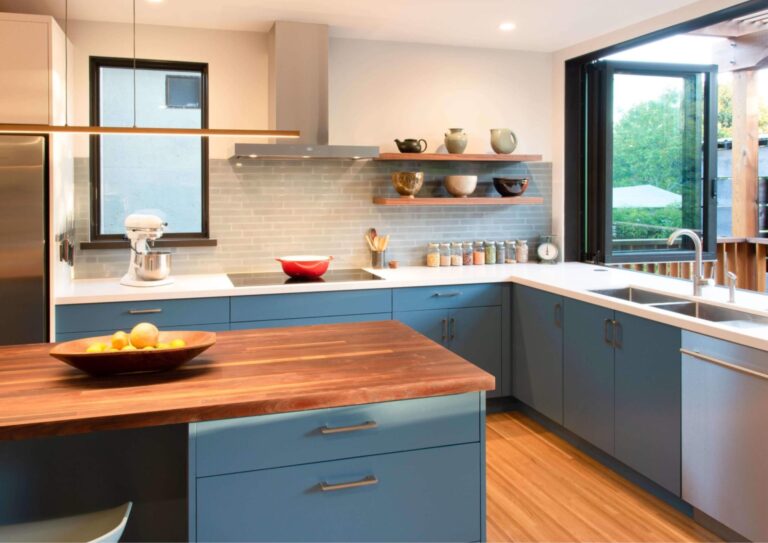
The debate around framed vs. frameless cabinets often centers on their durability. Let's explore the factors to consider:
Material Matters:
Both framed and frameless cabinets can be highly durable when built with high-quality materials. Thinner, less robust materials can compromise strength regardless of style. Look for cabinets constructed from thicker, sturdier materials like plywood for long-lasting performance. Naturally, these higher-quality materials may come at a higher cost.
Frameless Strength:
Frameless cabinets rely on thicker cabinet walls to compensate for the lack of a frame. This typically translates to a more expensive build due to the increased material usage.
@ampquartzcabinets Harga mur mur tapi style mesti nak aesthetic! Any other Muji style lovers out there? Drop us DM to consult 💬 #mujistyle #muji #melamine #ampquartz
♬ we cant be friends – chan
Uneven Walls: A Slight Frame Advantage:
Framed cabinets offer a slight edge in situations with uneven walls. The frame can help absorb some of the irregularities, simplifying installation and potentially enhancing longevity. However, skilled installers can compensate for uneven walls with frameless cabinets through careful measurement, leveling, and adjustments during installation.
The Bigger Picture:
Ultimately, cabinet durability depends on several factors beyond style:
- Material Quality: Opt for high-quality, thick materials like plywood.
- Installation Expertise: Choose experienced installers who can handle any challenges.
- Proper Care and Maintenance: Regularly clean and maintain your cabinets for optimal performance.
By prioritizing these aspects, you can ensure your kitchen cabinets, framed or frameless, become a long-lasting and beautiful focal point in your home.
Framed vs Frameless Cabinets 5: The Cost Factor
Choosing between framed and frameless cabinets can impact your budget. Here's a breakdown:
Frameless: Higher Initial Cost, Potential Long-Term Value
- More Materials: Frameless cabinets typically require thicker, higher-quality materials to maintain strength without a frame. This translates to a slightly higher initial cost.
- Durability and Aesthetics: The increased material translates to a sturdier cabinet with a premium feel and potentially longer lifespan.
Considering the Long Run:
While framed cabinets might have a lower upfront cost, remember:
- Quality Matters: Invest in high-quality materials regardless of style for better durability.
- Long-Term Value: Frameless cabinets, if made well, can be a worthwhile investment due to their functionality and timeless design.
The Final Cost: A Moving Target
The final price tag can vary depending on several factors:
- Manufacturer: Pricing strategies differ. Some base costs on materials, while others factor in labor time.
- Construction Time: Frameless cabinets might be quicker to build due to the lack of a frame, potentially leading to lower labor costs.
- Design Complexity: More intricate designs generally cost more.
- Material Selection: The type of wood used significantly affects price.
Looking Beyond the Price Tag:
When making your decision, consider these points:
- Value Beyond Cost: Focus on the long-term value proposition, not just the initial price.
- Durability Matters: Prioritize high-quality materials for lasting performance.
The Right Choice for You:
There's no one-size-fits-all answer. The best style depends on your:
- Budget: Consider both upfront and potential long-term costs.
- Priorities: Value aesthetics, functionality, or a balance of both?
- Project Needs: Does your kitchen layout favor one style over the other?
Expert Guidance Available:
Visit our AmpQuartz showroom and consult with our team. We'll help you navigate your options and make an informed decision for your dream kitchen.
Choosing Between Framed and Frameless Cabinets
Here's an improved version of the text about choosing between framed and frameless cabinets:
Framed vs. Frameless Cabinets: Beyond Aesthetics
While framed and frameless cabinets offer distinct looks, the choice goes beyond visual appeal. Let's explore practical considerations:
Installation:
- Framed Cabinets: The familiar frame simplifies installation for some professionals, potentially making the process smoother.
- Frameless Cabinets: Installation might require slight adjustments due to the lack of a frame. Screws used are typically shorter due to the cabinet's construction.
Materials and Durability:
- Framed Cabinets: The frame allows for the use of thinner materials while maintaining strength.
- Frameless Cabinets: Thicker materials are needed for stability without a frame, often leading to a higher cost. However, the simpler design can sometimes expedite construction, potentially offsetting the cost a bit.
Making the Choice:
Consider these factors to make an informed decision:
- Desired Look: Do you prefer a classic framed style or a sleek frameless aesthetic?
- Space Needs: Do wider openings offered by frameless cabinets hold value for you?
- Budget: Framed cabinets might be initially cheaper, but consider the potential for long-term value with frameless options.
- Durability: High-quality materials, regardless of style, are crucial for lasting performance.
By weighing these factors, you can choose the cabinet style that best suits your vision for a beautiful and functional kitchen.
@ampquartzcabinets Dapur Basah tu Apa? 🤔 Dapur basah (atau wet kitchen) ialah kawasan untuk korang memasak dan memerlukan banyak air macam mencuci sayur, ikan, dan daging. Selain tu katsini lah korang akan memasak makanan yang mengeluarkan bau kuat dan menghasilkan banyak asap macam menggoreng dan merebus. So, sangat PENTING untuk korang make sure korang decide material yang betul untuk dapur basah! 💦 #interiordesign #cantik #decoration #deco #moden #minimalist #rumahidaman #kitchendesign #jubin #dapur #ruangtamu #kitchencabinet #dapurbasah #wetkitchen #AMPQUARTZ
♬ original sound – DJ NizziE – DJ NizziE
Pros of Framed Cabinets
Increased durability and strength due to the frame construction
Traditional and classic look that adds charm to the kitchen
It is a more straightforward installation process compared to frameless cabinets
More variety in door styles and finishes is available
Better at keeping out dust and debris from inside the cabinets
Cons of Frameless Cabinets
Lack of structural support
Limited design options
Higher cost compared to framed cabinets
Challenging to install for DIY homeowners
Framed vs. Frameless Comparison
| Aspect | Framed | Frameless |
|---|---|---|
| Aesthetics | Traditional look | Modern and sleek |
| Maintenance | Easy to clean | Requires more upkeep |
| Installation | More complex | Easier to install |
| Durability | More durable | Less durable |
| Cost | Typically lower | Usually higher |
| Customization | Limited options | More design flexibility |
@ampquartzcabinets Just got new cabinets? Here’s what you need to know to FULLY utilise them 😉 #CabinetCare #HomeHacks #KitchenTips #AMPQUARTZ
♬ Good Luck Babe – relatetomusic
FAQs on Cabinet Construction Methods
What are the most popular cabinet construction methods?
Three popular cabinet construction methods are framed, frameless, and inset. Framed cabinets have a frame around the front of the cabinet box, while frameless cabinets do not. Inset cabinets have doors and drawers that are set into the cabinet frame.
What is the difference between framed and frameless cabinet construction?
Framed cabinets have a frame around the front of the cabinet box, providing extra support and a traditional look. Frameless cabinets do not have a frame, allowing for more storage space and a modern aesthetic.
How do I choose the right cabinet construction method for my kitchen?
Consider your style preferences, budget, and storage needs when choosing a cabinet construction method. Framed cabinets are traditional and sturdy, while frameless cabinets offer more storage space and a modern look. Inset cabinets provide a custom, high-end feel.
Are there any benefits to choosing inset cabinet construction?
Inset cabinets offer a sleek, custom look with doors and drawers that are set into the cabinet frame. They provide a high-end appearance and can be customized to fit your kitchen perfectly.
What are some key factors to consider when evaluating cabinet construction methods?
Consider durability, aesthetics, storage space, and customization options when evaluating cabinet construction methods. Choose a method that aligns with your style preferences and functional needs for your kitchen.

